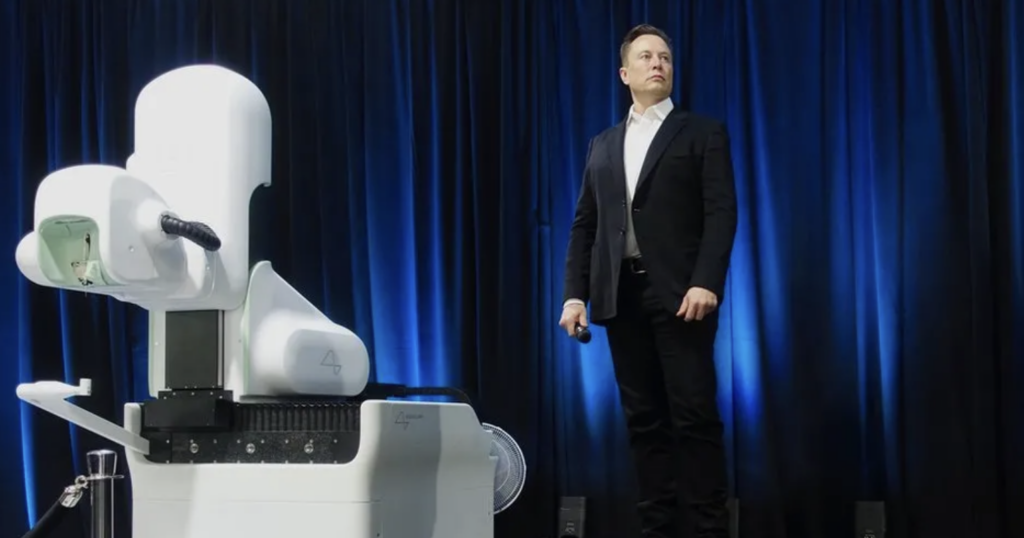
You’ll probably have seen the news this week: Musk’s company Neuralink have implanted their chips in humans for the first time, and the patient is apparently doing fine, with the chip managing to read neuron spikes with some success.
Typically for him, there’s a lot of marketing hype and not a lot of detail… and other companies who have actually done more already. But… it’s Elon. So…
His goal – according to recent pronouncements – is “human/AI symbiosis”, which he considers to be “species-level important”.
As I trace in my forthcoming book, God-Like: A 500-year History of Artificial Intelligence, this connection between humans and AI is part of a long history of transhuman fantasies and investments. While the particular tech may be new, the drives behind it are as old as humanity itself – an argument I try to build in the book in the hope of helping us better understand how we got to here, and which way we might go.
But for now, the thing that interested me about this piece was this prospect of our thoughts being able to be read by a chip:
The real trick will be developing a system which can interpret or translate the signals coming from the brain with a far greater level of accuracy. If and when that happens humans may be able to communicate with computers and other electronic devices in a way that is difficult to comprehend today.
Imagine being able to order a takeaway with your thoughts, or search the internet, or translate one language to another immediately in your head, just by thinking about it.
BBC – https://www.bbc.co.uk/news/health-68169082
I can imagine this. And my imagination immediately wants to turn the information flow on its head. Putting aside the health and social issues around this next level of convenience consumption, the real red flag here for me is the way that technology pretty much always promises one thing, but only as a way of delivering another.
Why are social media sites generally free? The promise is that we get to share all our thoughts with one another. But the price we are paying for that is high: companies like Google and Facebook are harvesting vast amounts of information about us and selling it back to us in laser-focused ads that have been algorithmically honed to get us clicking.
Imagine that, but on a brain implant. The advertising will all be about the benefits to the user – and the low cost of chip insertion. But the real cost will be being paid by our thoughts being harvested and sold back to us. This is already happening, and social media companies – who are just vast data-extraction operations mining our experiences – never want to talk about it.
But – as I discussed with my two kids (16 and 20)… what if you’re going into a job market where a lot of people have opted to be chipped… and are therefore much faster and more productive? What if you simply can’t get a decent job unless you get this augmentation… just as people found they couldn’t unless they learned how to use a PC, or – further back – to read and write?
Technology always offers great amplifications… but also asks us more and more complex questions about who we want to be. With AI – even before Neuralink sees big results – this questioning is going to get pretty deep, pretty quickly. And its time to start reflecting on what our answers are going to be.
I was watching the film The Holdovers the other day. Set in the early 1970s, it struck me that the lives they were living – pre internet, pre mobiles, pre PC – seemed almost how the The Amish would have seemed to those in the film. All of us draw lines on which technologies we bring into our homes – no Alexa round my place, thanks very much – but we’re also going to have to think about the lines we draw with what we want in our bodies.
Buttons, but no zips. Buggies but no cars. The Amish have chosen their line. Disagree with it if you will, but their active approach is a model for us all. Where’s yours going to be?